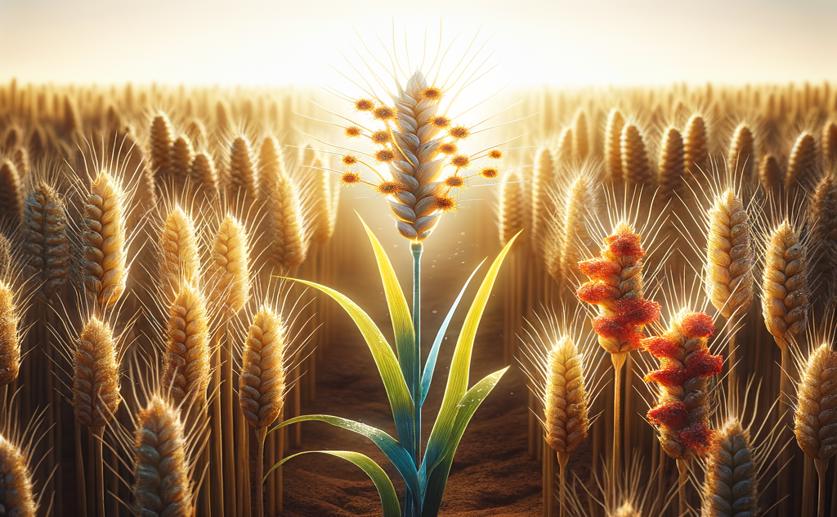
New Genetic Discoveries for Rust Resistance in Wheat
Jenn Hoskins
18th May, 2024

Image Source: Natural Science News, 2024
Key Findings
- The study by ICAR–Indian Institute of Wheat and Barley Research identified genetic regions linked to resistance against stem rust, stripe rust, and leaf rust in wheat
- Researchers used advanced molecular techniques to analyze 280 wheat genotypes across multiple environments, pinpointing specific genomic regions that confer rust resistance
- The findings provide valuable insights for developing rust-resistant wheat varieties, enhancing the sustainability and productivity of wheat farming
AgricultureGeneticsPlant Science
References
Main Study
1) Genome-wide association study identifies novel loci and candidate genes for rust resistance in wheat (Triticum aestivum L.)
Published 17th May, 2024
https://doi.org/10.1186/s12870-024-05124-2
Related Studies
2) Genome-Wide Association Study for Grain Protein, Thousand Kernel Weight, and Normalized Difference Vegetation Index in Bread Wheat (Triticum aestivum L.).
3) Integrated genomic selection for rapid improvement of crops.



 13th May, 2024 | Jenn Hoskins
13th May, 2024 | Jenn Hoskins